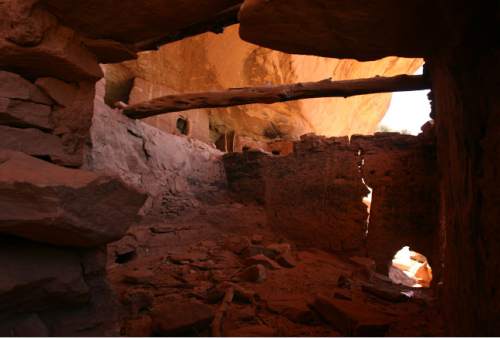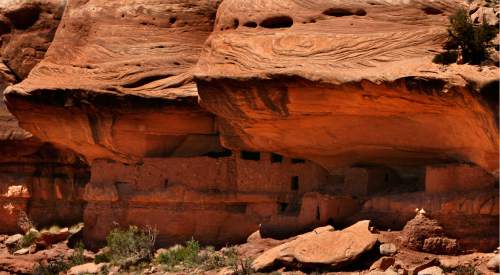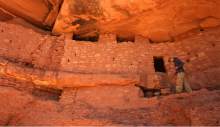This is an archived article that was published on sltrib.com in 2015, and information in the article may be outdated. It is provided only for personal research purposes and may not be reprinted.
State lawmakers are declaring grazing and mineral extraction the "highest and best use" for Cedar Mesa and the San Rafael Swell.
A resolution sailing through the Legislature, SCR4, is aimed at curbing what lawmakers say are abuses of the Antiquities Act by Democratic presidents — a sort of warning shot meant to discourage President Barack Obama from designating another monument in the state.
But the bill's language is prompting conservationists to wonder why lawmakers would prefer mining and drilling such cherished landscapes — both candidates for national monument status — over preserving their archaeological sites and geologic wonders for future generations.
Utah conservatives contend national monuments have become trophies handed down to curry support for liberal politicians without regard to what Congress had in mind when it passed the Antiquities Act more than a century ago.
"There is not a lot a state can do when a president wants to make hay with special interest groups, gobbling up a lot of our public lands and moving it away from multiple use," sponsoring Sen. Stephen Urquhart, R-St. George, told the House Natural Resources committee on Friday. "Past being prologue, you know it's coming again with this president."
Urquhart was referring to Bill Clinton's 1996 designation of the Grand Staircase Escalante National Monument, which SCR4 denounces for its lack of transparency and disregard of local sentiment.
Republican lawmakers and county commissioners are convinced President Obama is secretly scheming to impose another monument on Utah before leaving office in 2017.
Urquhart's resolution acknowledges Cedar Mesa and the San Rafael Swell are worthy of protection, but it claims "vast tracts of land" in both should be open to continued grazing and "environmentally sensitive" energy and mineral development.
Bluff activist Josh Ewing said Cedar Mesa is a "poster child" for protection under the Antiquities Act. The 700,000- acre region rising to the west of Blanding was once inhabited by Ancestral Puebloans, who left thousands of archaeological sites that continue to be looted.
"We are alarmed by the contention that industrializing the Mesa through energy development should be prioritized over preserving sacred cultural sites, Native American traditions, and a breathtaking natural landscape that draws visitors from around the world," said Ewing, executive director of Friends of Cedar Mesa.
Ewing's group, the Navajo and the National Trust for Historic Preservation are pursuing protective status for the Mesa under three separate proposals.
Congress passed the Antiquities Act in 1906 as a way to preserve cultural and historic treasures and areas of scientific interest.
Urquhart contends the law is designed to narrow such designations to the least amount of land necessary to accomplish the objective, and Obama is misusing it for political purposes.
"The objective has seemed to have turned into locking up huge swaths of the West to move it out of multiple-use to single-use, and that hurts our economy," Urquhart told his colleagues.
But conservationists rejected the entire premise of the bill.
"It's an exercise in futility," said Steve Bloch of the Southern Utah Wilderness Alliance. "We know Utah is better off for having several monuments designated in places like Arches and the Grand Staircase. They have been boons to this state's economy. That's why people come here — not to see a drill rig on Cedar Mesa."
He noted existing grazing rights and oil and gas leases would be honored under monument designations.
Obama has designated or expanded 16 monuments in his time in office. Nine totaling 1.1 million acres have been in Western states, most recently Colorado's Browns Canyon southwest of Denver.
"They have been places that communities, businesses, elected officials, sportsmen, recreationists, tribes have supported and asked for," said Brian O'Donnell, executive director for the Conservation Lands Foundation. "The idea that Obama is imposing this is the exact opposite. He has been responding to local communities who wanted these lands protected. He is using the Antiquities Act as Congress set it up to be used."
Two of Obama's largest designations are in New Mexico — the 242,455-acre Rio Grande del Norte in the north and the 496,330-acre Organ Mountains-Desert Peaks in the south.
"In New Mexico, this is wildly popular. It's promoting tourism for these areas," O'Donnell said. "There were community celebrations after these designations."
SCR4 advanced out of committee Friday with almost no discussion and awaits action on the House floor.







